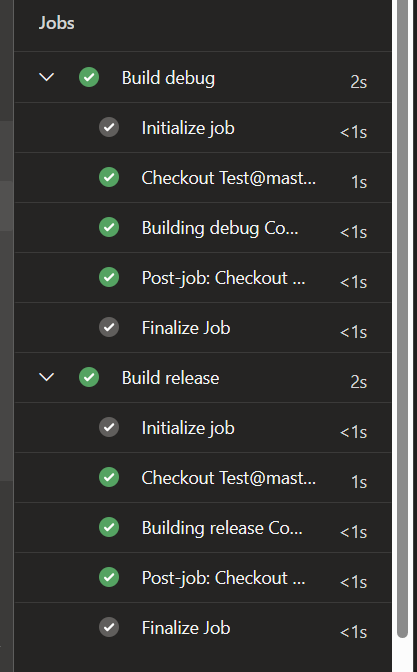Introduction
Using a job matrix in YAML pipelines is a really powerful tool to enable you to run parallel deploys with different variable values. Use cases include:
- Running MSBuild in parallel against multiple configurations with no extra code
- Running Deploys against multiple different environments
- Running Deploys against different regions in Azure
- Restarting VMs in Azure in parallel
Matrix Basics
MSDN has a good starter document to go through the basic syntax and how to use a matrix
The basic and most common declaration is within a job and can be done as below.
1
2
3
4
jobs:
- job: Build
strategy:
matrix:
A matrix can be defined in a very similar way to a complex object. So lets use MSBuild as an example, with MSBuild usually you will have a debug and a release configuration. Debug for testing and release for production. You could set you matrix as below
1
2
3
4
5
6
7
8
jobs:
- job: Build
strategy:
matrix:
debug:
Configuration: debug
release:
Configuration: Release
You set the matrix with 2 properties debug and release. Within those properties you can set variables to be used. We set configuration to be debug and release in each. So lets try and visualize it now within the pipeline. The below pipeline code will show a basic matrix in action.
1
2
3
4
5
6
7
8
9
10
11
12
13
14
15
16
trigger: none
pool:
vmImage: ubuntu-latest
jobs:
- job: Build
strategy:
matrix:
debug:
Configuration: debug
release:
Configuration: release
steps:
- script: echo 'Building $(Configuration) Configuration.'
displayName: Building $(Configuration) Configuration
As you can see in the below screenshot with this simple yaml code we have now been able to create 2 parallel jobs to run.
Passing Complex Objects to matrix
As well as defining a matrix as above, in some cases pipelines can get complicated and we may need to repeat certain matrixes across lots of jobs. Instead of repeating matrix code across multiple jobs we can actually define it as a parameter and then pass it into the matrix dynamically this allows code reuse and neatens up yaml code a hell of a lot. The best thing is, its super easy. Take a look below
1
2
3
4
5
6
7
8
9
10
11
12
13
14
15
16
17
18
19
20
21
trigger: none
pool:
vmImage: ubuntu-latest
parameters:
- name: matrix
type: object
default:
debug:
Configuration: debug
release:
Configuration: release
jobs:
- job: Build
strategy:
matrix: ${{ parameters.matrix }}
steps:
- script: echo 'Building $(Configuration) Configuration.'
displayName: Building $(Configuration) Configuration
Changing the maximum number of parallel executions
Another key feature of a matrix is being able to set the number of max parallel threads that occur at once. This can be really useful in scenarios such as restarting VMs where you only want a certain number off at a time or other scenarios where you want to control the number of executions. We have changed our example to be a restarting server example as below, with a max parallel of 1:
1
2
3
4
5
6
7
8
9
10
11
12
13
14
15
16
17
18
19
20
21
22
23
24
25
26
trigger: none
pool:
vmImage: ubuntu-latest
parameters:
- name: matrix
type: object
default:
local:
servername: local01
staging:
servername: staging01
development:
servername: development01
production:
servername: production01
jobs:
- job: RestartServer
strategy:
matrix: ${{ parameters.matrix }}
maxParallel: 1
steps:
- script: echo 'Restarting $(servername).'
displayName: Restarting $(servername)
As you can see from the below screenshots each job executes and waits until the previous job has completed to continue. This allows you to only have 1 server off at a time but still use a matrix to really promote code reuse.



